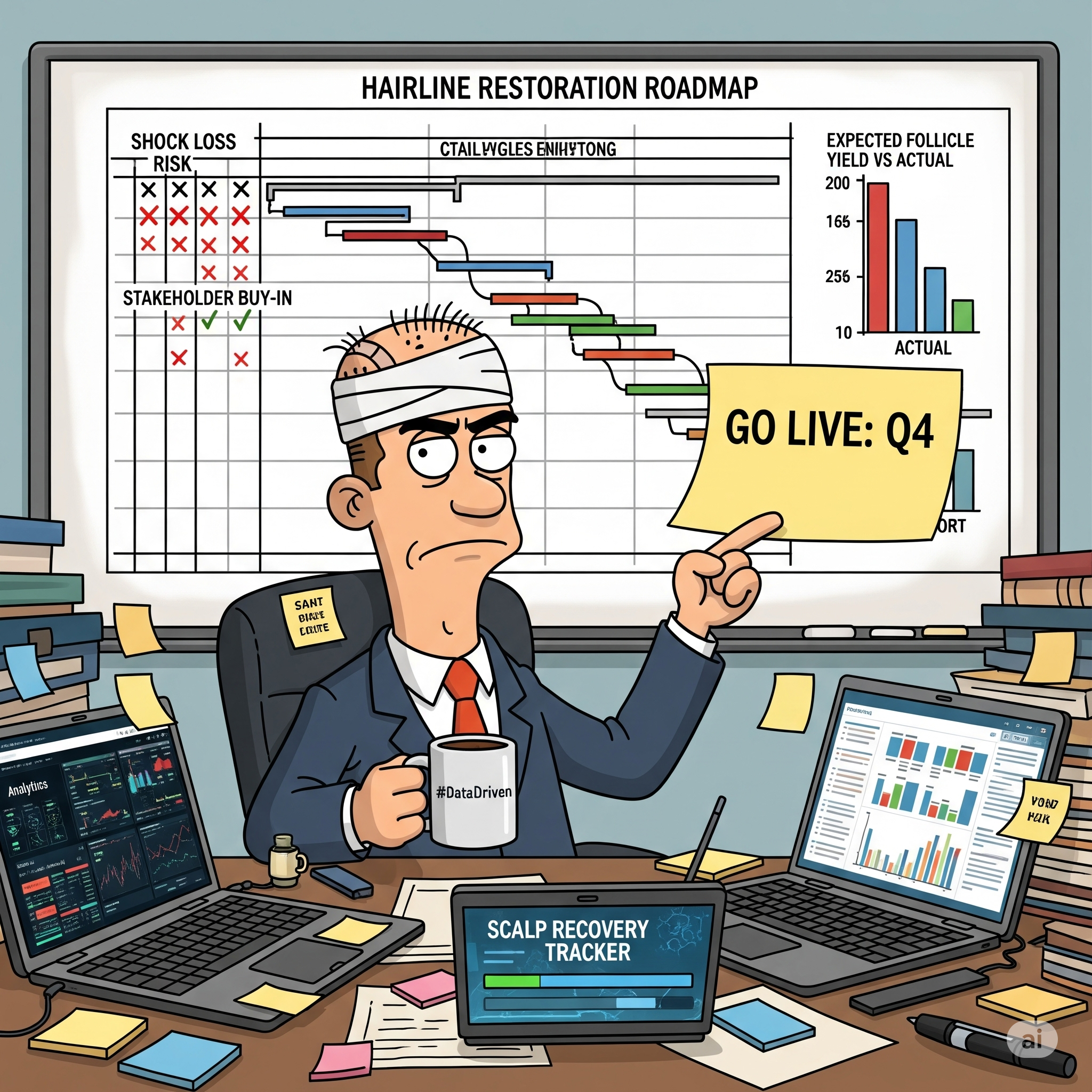The Project Manager’s Guide to Hair
How I applied agile methodology to my scalp — and won back more than just density.

Hair loss doesn’t happen overnight. It creeps in... like scope creep... subtle, unannounced, and then suddenly you’re delivering daily standups to your forehead in the mirror.
I knew it was time for intervention when my hairline had receded further than our Tableau adoption curve. And like any good analytics professional, I didn’t panic. I opened Excel.
Phase 1: Initiation – Business Case and Stakeholder Alignment
Pain Point: Decreased frontal density impacting confidence metrics and mirror conversion rates.
Initial Hypothesis: A modest follicular intervention may restore both volume and executive presence.
Stakeholder Analysis:
Self: Highly invested.
Partner: Supportive, but skeptical. Wants ROI.
Barber: Passive-aggressive.
Team at work: Unaware, but highly observant. Risk of awkward comments post-op... High.
Phase 2: Vendor Selection – Turkish Clinics vs Dubai Dermatology
I ran a full procurement cycle. RFPs. Comparative matrices. Weighted scoring based on:
Cost per graft (C/G)
Surgeon credentials (Board-certified vs Instagram-famous)
Success rate (with photo evidence, not testimonials from “Mike D.”)
Yelp reviews with fewer than 3 typos
I even considered sentiment analysis. If I could build a pipeline to score customer complaints on our BI platform, surely I could sentiment-score Reddit threads on FUE vs DHI.
Phase 3: Design – Hairline as a UX Problem
Let’s be clear... this is not just a transplant. This is a front-end redesign.
Goals: Natural look, slight restoration, age-appropriate density.
Constraints: No sharp corners. No “Lego man.” No visible donor scars during townhalls.
Prototype: Surgeon’s sketch on an iPad.
Iteration Feedback: “Can we push the widow’s peak back 5mm? Feels too... aspirational.”
The hairline is where aesthetics meet analytics. Form meets function. And ego meets cold biological reality.
Phase 4: Execution – The Surgery Sprint
This was a two day 16-hour sprint, 8 each day. No retros. No bathroom breaks.
Tools Used: Micropunch extraction, saline injections, Spotify playlist titled “Scalp Flow State.”
Issues Logged:
Itchy scalp (Severity: Medium)
Post-op swelling (Severity: High... Risk of Zoom suspicion)
Bandaged head resembling crash-test dummy (Severity: Visual only)
But overall, delivery was on time, within budget, and mostly to spec.
Phase 5: Monitoring & Evaluation – Dashboarding the Regrowth
I now have a Follicular Recovery Dashboard in Google Sheets:
Columns: Day, % Coverage, Photo link, Mood score
Chart: Cumulative Graft Uptake vs Expected Yield Curve
Annotations: “Day 20... panic. Looks worse than before. Googled ‘hair transplant regret’ 14 times.”
I also maintain a Risk Register:
Graft rejection
Shock loss
Someone saying “Hey, did you do something to your hair?” in a tone that means everything and nothing
Phase 6: Benefits Realization – 12 Months Later
By Q4, the project should reach full maturity. KPIs include:
Increased confidence in public-facing roles
Decreased overthinking during video calls
Optional: switching LinkedIn profile picture to a smug side-angle
Final Thoughts
Most people treat a hair transplant as a personal journey. I treated it as a transformation project with executive oversight, vendor management, and a sprint plan.
Data ages like wine. Dashboards age like milk. And hair? Hair just disappears... unless you manage the hell out of it.